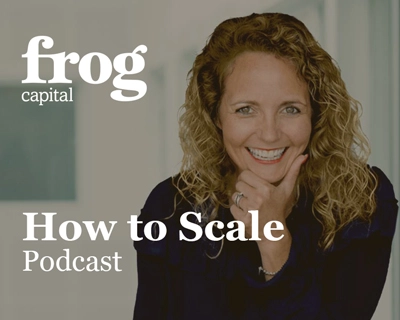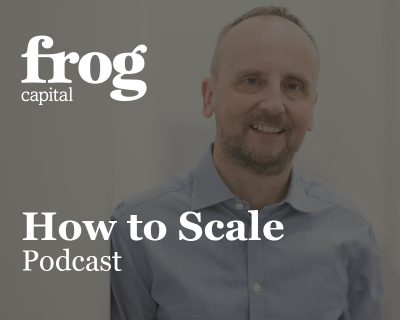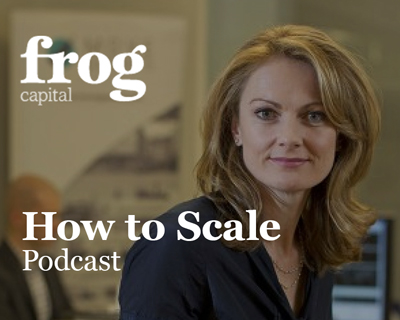How many other £250k investment decisions do you approve, after a couple of meetings with a perfect stranger? Not only is a new VP Sales a huge investment decision, it is also the appointment of an individual to one of the key roles in your business.
- Owning key customer relationships? VP Sales
- Driving revenue growth? VP Sales
- Providing the management information that supports critical business planning? VP Sales
Many CEOs fall into the trap of following too basic an approach, starting by instructing an HR Manager or CFO to brief the usual recruitment agencies with a job description. CVs are shortlisted and 1 to 2 hour meetings are set up, where you will ask a series of questions about their relevant experience. Once a preferred candidate is selected, you may well ask other members of the senior management team and perhaps one of your non-execs to interview them, so you can consider other opinions. Once a discussion has taken place and a decision made, an offer would be dispatched and hopefully accepted.
But to hire the best possible candidate for this key role, you will need to follow a different process.
Step 1: Approach
It is absolutely crucial that you give this process your full attention. The job description should be competency-based with the job purpose clearly articulated. Thought should be given to what good looks like and how this translates into measures and objectives. Also, write down what kind of person you want in that role, in your business. Detail their characteristics, motivations, strengths and principles.
Before hiring a VP Sales, the CEO will typically have been both the sales lead and the best sales person. It is a big step to hand the responsibility for your customers over to someone new, but if you are looking to scale the business, there is no other choice. There are sales people out there better than you: you just need to find and convert them.
Brief the recruiter or head hunter yourself. This will stop you wasting an awful lot of your time (and theirs) on undesirable candidates as you will be able to paint a clearer picture than your HR Manager. This is a critical hire for the business and cannot be left solely to a HR Manager.
Step 2: Decision process
If you’re paying substantial recruitment fees, try to arrange for all shortlisted candidates to be seen in the same place (preferably offsite) on the same day. By devoting yourself to the process, away from distractions, you can keep your mind focused on the job in hand.
Give all shortlisted candidates a task to prepare which must be presented on the day. This then gives you some comparable context when evaluating candidates. Ask the candidates to outline their approach to specific, real-world challenges, for example:
- How they manage performance and set sales KPIs
- How they lead and motivate international teams (aside from financial incentives)
- How they optimise CRM adoption and usage
- How they conduct key account planning and global territory management
- How they join up sales and marketing activities
Ideally, they should present verifiable narratives to support their experiences.
Invite one of the sales team and another VP to the interview. This will ensure you get balanced feedback from across the business directly from those who would be managed by or working alongside the VP Sales. Ask for their opinions to be made by email initially to avoid collusion and giving too much weight to the loudest voice in the room.
Step 3: Final Assessment of your preferred candidate
Once you have a preferred candidate, it can be helpful in some circumstances to see how they perform in a real business situation. A visit to one of your key, trusted clients with the most able salesperson you have is one way of achieving this. This visit allows you to test the quality of their thinking by asking for their assessment of the client relationship and opportunity. You can then also ask for their view on your existing salesperson’s performance during the visit and compare with your own. Do they have some insight you don’t? Speak to the client too to get their impression of the candidate.
At the final meeting, they should provide auditable materials setting out how they have previously managed these processes in the past:
- Qualification
- Forecasting
- Negotiation and closing
- Reporting
These are vital sales controls, the explanation of which will help separate the ‘super-salesmen’ from the genuine VP Sales. Maybe even give them an example sales pipeline with descriptive data, and ask them to comment on the likely outcomes.
Do take references from the candidate but don’t underestimate the importance of references from other sources. Multiple references are critical to helping you develop a balanced impression of the candidate (see reference questions below). A successful VP Sales with a solid track record of delivery will know many people who are willing to take a reference call. These calls should be made by you and on the proviso that direct questions will be asked and honest answers expected: anything else is a waste of time. Be skeptical about career history that is not backed up by a very supportive reference. Good people get excellent references. Good references are not good enough.
Discrete, indirect referencing can also be fruitful. Ask a direct reference to recommend another person to call (e.g. a former customer or colleague) and they become an indirect reference that hasn’t been provided by the candidate. For senior hires, three direct references and between two and five indirect references will be enough.
If your initial offer is not accepted, pay close attention to their negotiation style if you are discussing the salary with them, as this is a key skill required for the role. Are they trying to create a win-win scenario or do you feel boxed in by their demands? Put yourself in your clients’ place, how would they respond to this individual’s style?
Step 4: Post-onboarding review
Making a recruitment mistake is still a risk. Making a mistake and not fixing it quickly, however, is something you can prevent. Here are two ways to avoid this:
- Ensure you have clear measures in place in the first nine months: For example, months 1-3 could be activity based, 3-6 could be pipeline based and 6-9 could be revenue based. There should be formal, sit-down reviews at the end of each month with a clear understanding of the consequences of non-achievement. The probationary period should extend for a minimum of 3 months with benefits not kicking in until after that point
- Include a claw-back clause written in to your agreement with the recruiter: If the candidate doesn’t make it through the first 3 months, a full rebate or 100% discount on the next appointment should be triggered. You should feel a majorly positive impact within weeks. If not, you’re better off making a tough decision quickly
It is essential to performance-manage your VP Sales. Whilst it has to be their plan with their people executing it, the objectives should be set and reviewed formally by you, at least once a month. Get into the habit of applying this level of rigour to managing your new VP Sales – the really good ones will appreciate the importance of this discipline and respond to it.
Whilst no recruitment exercise can be entirely risk-free, you can substantially increase your chances of a successful hire by following the simple steps outlined in the attached toolkit. The toolkit also includes a guide on what your VP Sales’ salary expectations will be.














